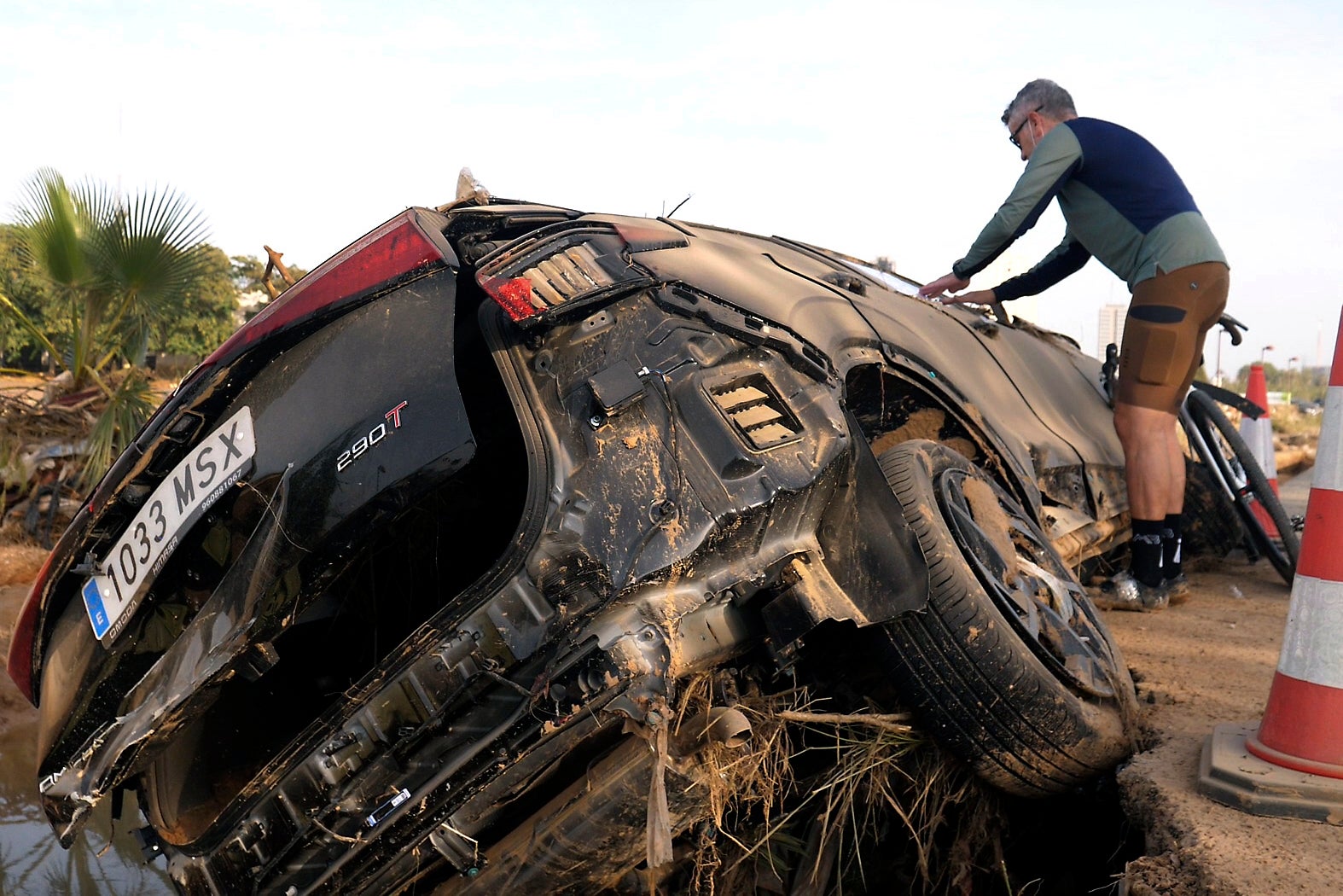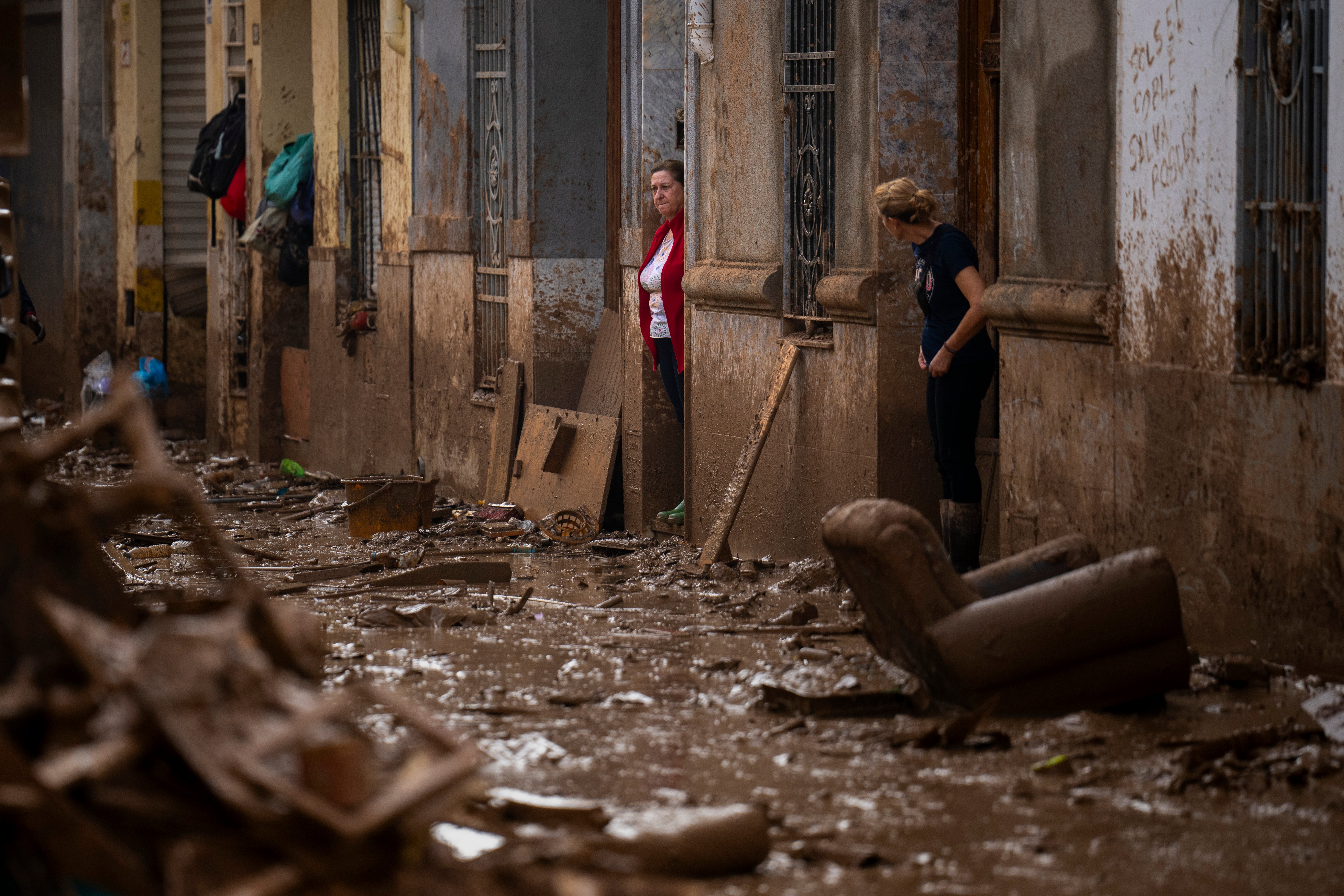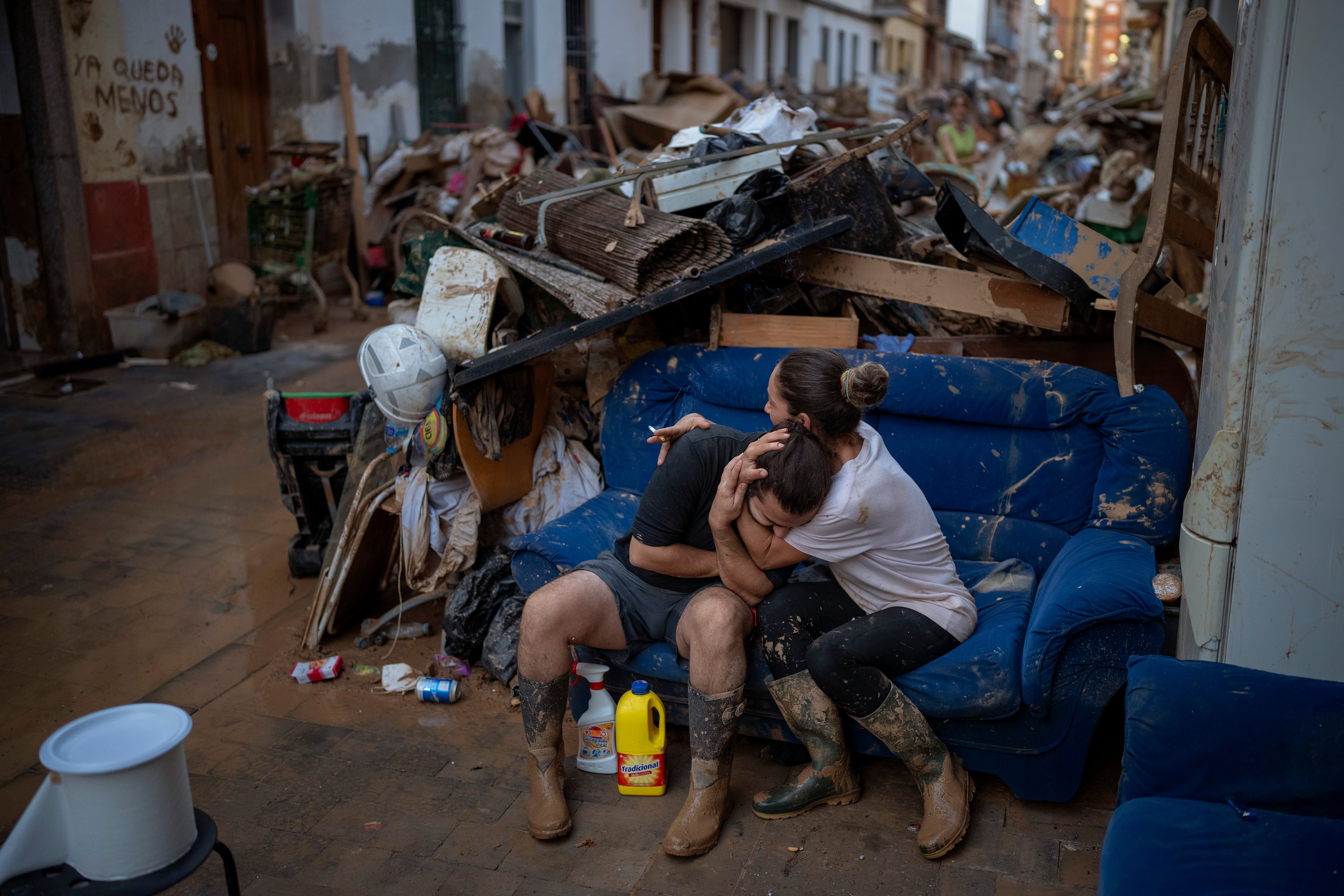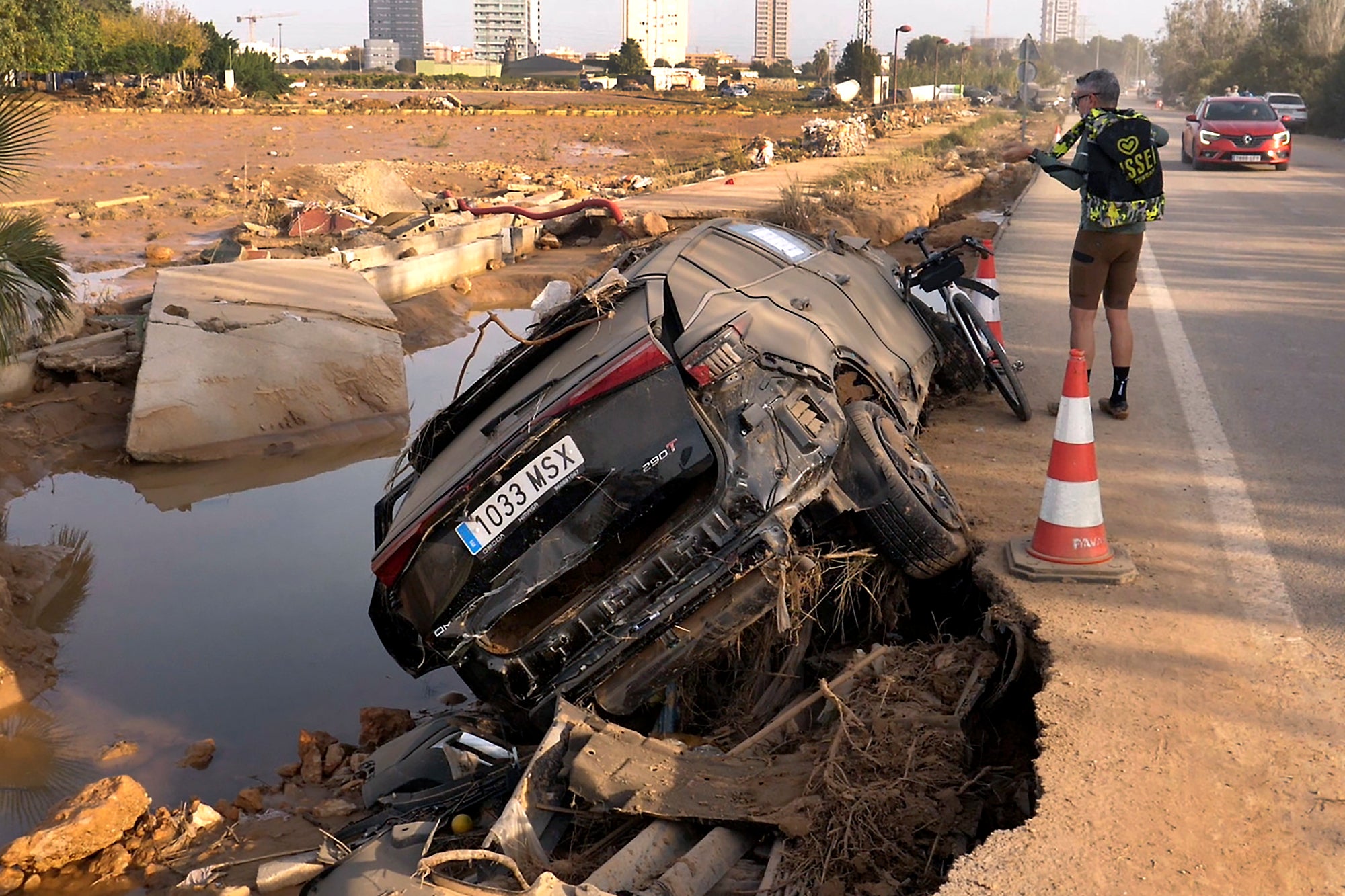At the Spanish flood ‘ground zero’ normal is a long way away
Over 60 people perished in Paiporta when a wave of water rushed down the Poyo canal

Your support helps us to tell the story
From reproductive rights to climate change to Big Tech, The Independent is on the ground when the story is developing. Whether it's investigating the financials of Elon Musk's pro-Trump PAC or producing our latest documentary, 'The A Word', which shines a light on the American women fighting for reproductive rights, we know how important it is to parse out the facts from the messaging.
At such a critical moment in US history, we need reporters on the ground. Your donation allows us to keep sending journalists to speak to both sides of the story.
The Independent is trusted by Americans across the entire political spectrum. And unlike many other quality news outlets, we choose not to lock Americans out of our reporting and analysis with paywalls. We believe quality journalism should be available to everyone, paid for by those who can afford it.
Your support makes all the difference.The mangled car in which Jorge Tarazona’s three-year-old niece and sister-in-law perished in last week’s catastrophic flooding in Spain now hangs halfway off the ragged edge of a highway.
His brother managed to survive, clinging to a fence. He and his family had been caught in traffic driving home to Paiporta on Valencia’s southern outskirts, Tarazona said. They had no chance to escape when the tsunami-like wave quickly overflowed the nearby drainage canal and swept away everything in its path.
“They did not have time to do anything,” Mr Tarazona told The Associated Press, a week after the 29 October flash floods. “My brother was dragged away and ended up clinging to a fence.” His sister-in-law “could not get out and died with her little girl”.
Mr Tarazona had ridden a bike back to the site and taped a note on the car asking for whoever eventually removed the wreck off the side of the highway, to call him.
“It all happened so fast,” he said, tears coming to his eyes. “In half an hour the current had carried away the car. There was no time, no time. She managed to send me the location of their car hoping for a rescue.
“The next day she was found dead inside,” he said.

It’s unclear if the two are included in the official toll of the 217 confirmed dead as fatalities tick up, eight days after the deadliest floods in Spain this century.
Paiporta has been labelled by Spanish media as the “ground zero” of the natural disaster that has also left 89 people still missing, while officials say the real figure could be higher.
Over 60 people perished in Paiporta when a wave of water rushed down the Poyo canal that cuts through its centre. Frustration over the survivors’ sense of abandonment exploded in Paiporta on Sunday when a crowd greeted Spain’s royals and officials with a barrage of mud and other objects.
Prime minister Pedro Sanchez was rushed away and the royal couple had to eventually cancel the visit after speaking to several distraught neighbours amid a chaotic scene.
The Civil Guard said they rescued two people who had been trapped in their Paiporta home, almost a miraculous exception among the tragedy.
The mayor of Paiporta, a middle-class community of 30,000, pleaded on Tuesday for a “higher authority” to step in and take control of her municipality because the floods had made it impossible to go on. Mayor Maribel Albalat said all the municipal buildings, from the town hall to the local police, had been severely damaged and that many of the local civil servants “are in a state of shock”.
“Paiporta is a strong village, but this overwhelms our capacities as a local administration,” she said.

The air-throbbing “thup, thup, thup” of the huge, two-propeller Chinook helicopters that have flown overhead with the arrival of the army has added to the post-apocalyptic atmosphere.
The destruction, however, went far beyond Paiporta and covered a huge swath of municipalities, above all on the southern flank of Valencia city on the Mediterranean coast. Seventy-eight localities had at least one person die from the floods. Police have expanded their search to the nearby marshes and coastline, where the waters carried some away.
The residents, businesses and town councils of the affected localities can apply for financial help from a €10.6bn (£8.8bn) relief package from Spain’s government. The regional Valencia government, which is being slammed for not alerting the populace of the danger in time, has asked the central government in Madrid for €31bn to ensure the recovery.
Over a week later, the clean-up goes on to get rid of tons of mud and debris that clog street after street, filling thousands of ground floors, and destroying living rooms and kitchens. Neighbourhoods were left without shops and supermarkets after all their products were ruined. Many houses still don´t have drinking water.

An impromptu army of volunteers were the first helpers on the ground, shovelling and sweeping away the sticky brown mire covering everything, and helping to start removing pile after pile of debris that made access to cars impossible in many areas.
Authorities eventually mobilised 15,000 soldiers and police reinforcements to help firefighters search for bodies and start extracting thousands of wrecked cars strewn over streets and sunk in canal beds.
At every corner, cars are piled on top of one another or smashed into buildings, light poles, trees and bridge overpasses.
“There is still so much to do,” said volunteer Juanma Baztan Lopez, who is helping churn through the muck in Catarroja, which borders on Paiporta, in his four-wheel drive. He has helped transport doctors to people in need, deliver essential products, and tow away wrecked cars.
“It will take a year to get this back to normal,” he said.